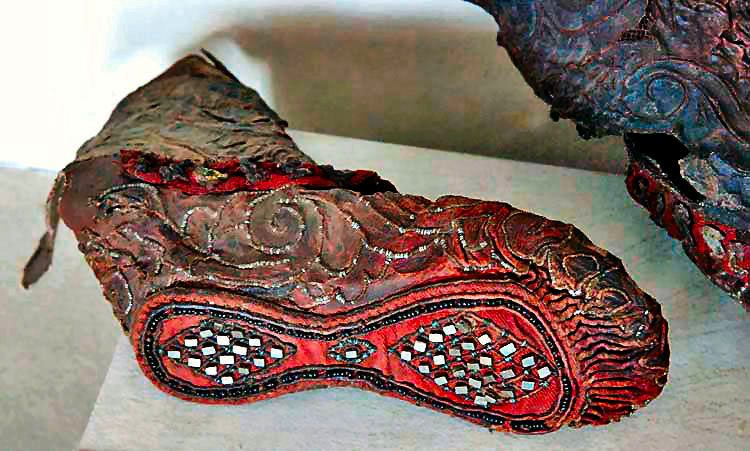
Image of the pyramids via sculpies/Shutterstock.
Scientists are plagued by a number of questions regarding ancient times. On of the most perplexing is how the ancient Egyptians moved the huge stones needed to build the pyramids. The stones were often as much as 2.5 tons, and without the assistance of modern technology, moving material of this size and weight is a truly amazing feat. Individuals have proposed a number of different ways that this task could have been accomplished (aliens is probably one of the more far-fetched). Now, it seems that we finally have a clear answer (No. It does not involve aliens).
Researches from the University of Amsterdam think that they have come up with a solution: Water.
Ultimately, it all comes down to decreasing the amount of friction. In order to transport materials, the ancient peoples would utilize large sleds. These sleds enabled individuals to travel long distances across the desert sands with a lot of material, much like individuals who used sled-dogs in the snow. However, if you try and transport something really heavy (say, 2.5 tons), then the sled sinks into the ground and digs into the sand at the front of the sled. This sand would eventually build up, forming what is called a “berm,” and it would have to be regularly cleared away.
Obviously, this would be a terribly slow and tiresome process. In fact, it would be a very, very slow process. We know that the great pyramid took 20 years to build and required some 100,000 slaves. But we couldn’t get the numbers to add up correctly; it seemed rather unlikely that this structure could be completed in such a time-frame, given all of the aforementioned conditions.
Yet, wet sand does not buildup in the way that dry sand does. And herein lies the key. If you get just the right amount of dampness, microdroplets of water will bind the grains of sand together, and capillary bridges (the water that binds them together) will form across the grains. Ultimately, this prevents the sand from berming (building up) in front of the sled. Amazingly, this process also cuts the amount of force required to drag the sled in half, which makes it possible to complete the project in the time we know that it took.
The University of Amsterdam press release explains,
The physicists placed a laboratory version of the Egyptian sledge in a tray of sand. They determined both the required pulling force and the stiffness of the sand as a function of the quantity of water in the sand. To determine the stiffness they used a rheometer, which shows how much force is needed to deform a certain volume of sand.
Experiments revealed that the required pulling force decreased proportional to the stiffness of the sand…A sledge glides far more easily over firm desert sand simply because the sand does not pile up in front of the sledge as it does in the case of dry sand.
What’s more, ancient cave art seems to support this hypothesis. The artwork in the tomb of Djehutihotep reveals a scene of slaves hauling a colossal statue of the Middle Kingdom ruler. At the front, there is a person depicted pouring liquid into the sand (see it in the image above).
Now, we just need to figure out how in the heck they made Stonehenge…

A large statue is being transported by sledge. A person standing on the front of the sledge wets the sand. (Courtesy of Daniel Bonn)








 Photographer Finds Locations Of 1960s Postcards To See How They Look Today, And The Difference Is Unbelievable
Photographer Finds Locations Of 1960s Postcards To See How They Look Today, And The Difference Is Unbelievable  Hij zet 3 IKEA kastjes tegen elkaar aan en maakt dit voor zijn vrouw…Wat een gaaf resultaat!!
Hij zet 3 IKEA kastjes tegen elkaar aan en maakt dit voor zijn vrouw…Wat een gaaf resultaat!!  Scientists Discover 512-Year-Old Shark, Which Would Be The Oldest Living Vertebrate On The Planet
Scientists Discover 512-Year-Old Shark, Which Would Be The Oldest Living Vertebrate On The Planet  Hus til salg er kun 22 kvadratmeter – men vent til du ser det indvendigt
Hus til salg er kun 22 kvadratmeter – men vent til du ser det indvendigt  Superknepet – så blir snuskiga ugnsformen som ny igen!
Superknepet – så blir snuskiga ugnsformen som ny igen!  Meteorite That Recently Fell in Somalia Turns Out to Contain Two Minerals Never Before Seen on Earth
Meteorite That Recently Fell in Somalia Turns Out to Contain Two Minerals Never Before Seen on Earth  Nearly Frozen Waves Captured On Camera By Nantucket Photographer
Nearly Frozen Waves Captured On Camera By Nantucket Photographer  It’s Official: Astronomers Have Discovered another Earth
It’s Official: Astronomers Have Discovered another Earth 